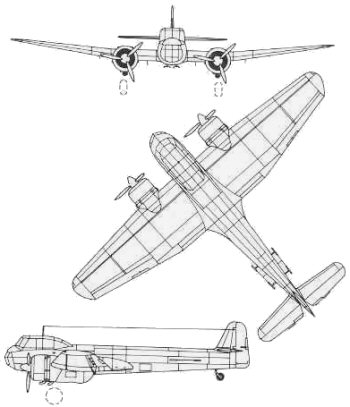
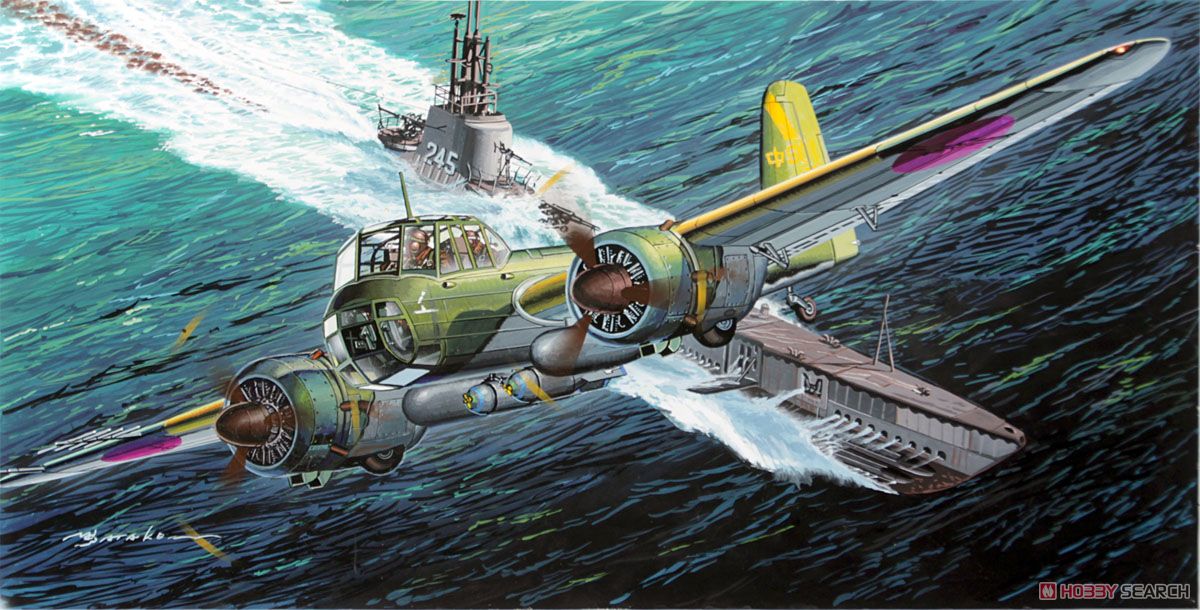
Data from the Japanese Aircraft of the Pacific War
Japan's late-war anti-submarine bomber, one of the first anti-sub bombers in such a role. Although it looks similar to the Junkers Ju-88, it was a smaller design, and had different design details along with it.
Gen. characteristics:
Crew: 3 (pilot, bombardier, gunner)
Length: 12.09 m (39 ft 8 in)
Wingspan: 16.00 m (52 ft 6 in)
Height: 4.12 m (13 ft 6 in)
Wing area: 38.2 m² (411 ft²)
Empty weight: 3,102 kg (6,839 lb)
Loaded weight: 4,800 kg (10,580 lb)
Max. takeoff weight: 5,318 kg (11,720 lb)
Powerplant: 2 × Hitachi GK2C Amakaze-31 9-cylinder radial engines, 455 kW (610 hp) each
Performance:
Maximum speed: 322 km/h (200 mph)
Range: 1,342 km (839 miles)
Service ceiling: 4,490 m (14,730 ft)
Rate of climb: 229 m/min (751 ft/min)
Wing loading: 126 kg/m² (26 lb/ft²)
Power/mass: 0.19 kW/kg (0.12 hp/lb)
Armament:
1 × flexible rearward-firing 7.7mm Type 92 machine gun (rear cockpit)
2 × fixed forward-firing 20mm Type 99-2 cannons sometimes fitted (wing roots or panels?)
2 × 250 kg (550 lb) bombs or depth charges
Radar equipment:
Type 3 Model 1 magnetic anomaly detector
Type 3 Ku-6 Model 4 radar
ESM Antenna equipment
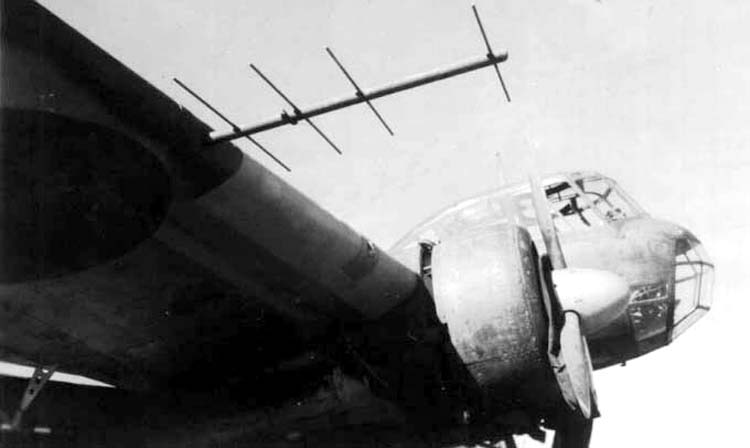


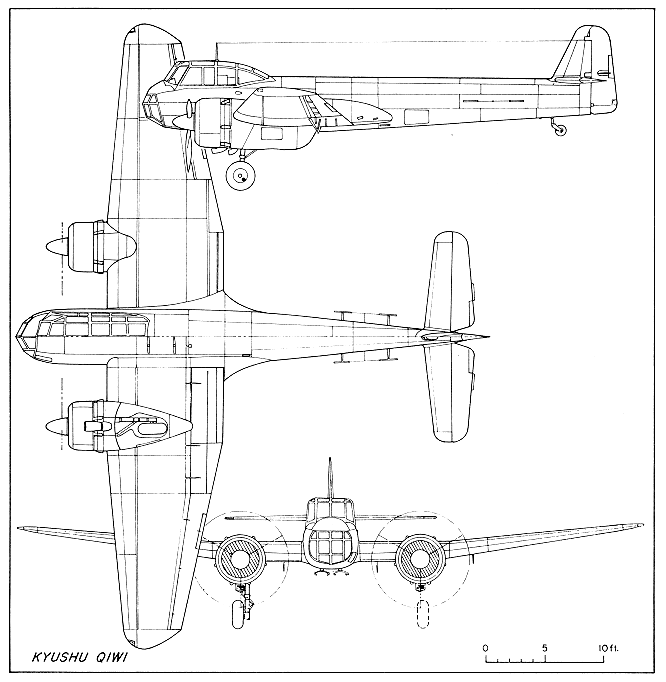

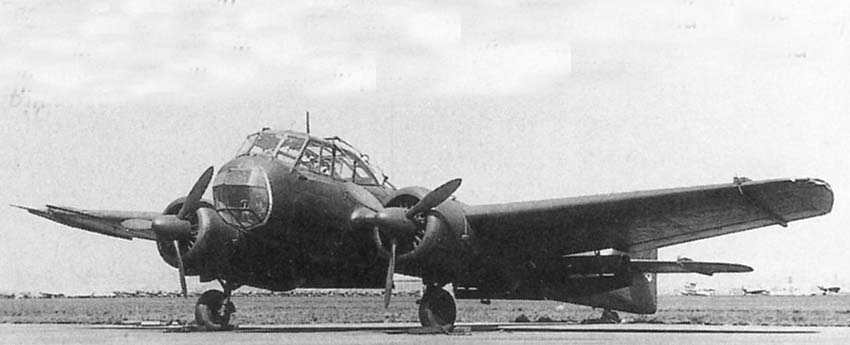 Prototype
PrototypeQ1W1 - one prototype
VariantsQ1W1-11 - main production variant
Q1W2-21 - wooden tail pieces, built in small numbers
Q1W1-K - all-wood trainer variant of the Q1W1-11, capable of holding up to four trainees, one made
Units (tail-codes included)
Chūshi Kokutai - 中
Saeki Kokutai - サヘ
Yokosuka Kokutai - ヨ
901st Kokutai - KEA
Technical Air Intelligence Unit - ATAIU (post-war)
 Author
Topic: Kyushu Q1W1 Tokai (Lorna) (Read 2427 times)
Author
Topic: Kyushu Q1W1 Tokai (Lorna) (Read 2427 times)


